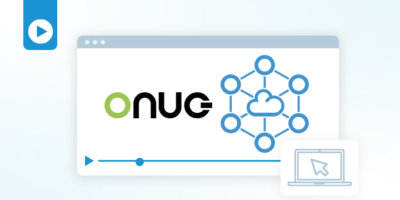You’ve heard about it in the news and trade publications: multi-cloud and hybrid cloud is all the rage. But I have news for you: It’s early days, and there’s a lot that needs to happen to make it happen. Operational simplicity for networking will be a key element of success.
First of all, here’s why multi-cloud is interesting: A huge number of infrastructure as-a-service (IaaS) and platform as a service (PaaS) services are popping up and being used for applications ranging from machine learning to cybersecurity. This provides businesses and organizations a lot of options to deploy scalable applications with flexibility. But the hybrid approach is interesting as well – this means that organizations can host applications either in private or public data center, with the capability to “switch” among the cloud services that offer the best pricing and features. This is a key consideration for hedging against escalating cloud costs, data governance challenges, or even cloud vendor lock-in.
In all these scenarios, the network is a key element. In my work with client research, I’ve found it’s the topic for end users that is most vexing. The reason is that networking infrastructure is often part of a large installed base that’s not always easy to “move” or even connect to the cloud. The answer is to adopt cloud-friendly networking software that can tie heterogenous network elements together.
Tying Together the Silos
It’s the silos, stupid. This is the most frequent topic that comes up when we talk about multi-cloud networking (MCN). Networking comes in many formats, and the installed based can be vast and complex.
For example, here are just a few of the networking environments at are out there and how they are different:
Public Cloud Networks: The major cloud services, such as Amazon, Oracle, Microsoft, and Google, all have their own networks which can be considerably opaque and proprietary. In many cases, they wrote their own software. But there are options to connect to these networks, including the use of APIs and other data-modeling technologies that abstract hardware interfaces for cloud networking – also known as “infrastructure as code.”
Traditional Enterprise Networks: Many enterprises built their networks out of the client-server model of the 1990s, and they have large installed bases of hardware-based networking infrastructure that may be managed by proprietary command line interface (CLI). They may also have private data centers built with more modern cloud technologies. Enterprises are looking for ways to leverage APIs and cloud networking software to tie these elements together and provide operational simplicity – which includes being able to manage and see the entire networking infrastructure.
Telecommunications Networks: The large “telcos” originally built networks with equipment that differed from enterprise networks but providing large amounts of scale and reliability. They also have their own software systems such as Operations Support Systems (OSS) and Business Support Systems (BSS). With the imminent expansion of 5G infrastructure, they are moving toward a cloud model of “disaggregation,” which is good because it means that cloud technologies and telco technologies are converging. This will provide opportunities to tie cloud networking with telco networks using new approaches such as API-driven software.
Other Networks (IoT, Factories, etc.): But wait, there’s more. There are other types of networks such as wireless networks, public-service networks, and Internet of Things (IoT), which can include anything from a traffic light to a factory. Some of these elements may include discrete networking devices specific to an industry, such as an automated teller machine or an industrial device on an oil rig. IoT is driving digital transformation by connecting, monitoring, and controlling devices such as traffic lights, automobiles, and sensors – but it needs to be connected to private networks and public data centers alike.
The New Operational Framework
To achieve full cloud integration, network teams desperately need operational support for connecting to cloud networks. This means providing an easy ways to monitor, validate, and test the network. More importantly, because of the new scale of the cloud, this new approach to validation and testing needs to be automated.
This new network supervision should be present in the form of the following two elements:
- Compliance: The enforcement of pre-defined network standards coupled with auditable tracking and reporting.
- Validation: The capability to prevent compliance violations from entering the network in the future.
Managers need both these sets of tools to check that the network is being configured and monitored correctly, according to best practices. They use these tools to gain visibility and trust and operationalize the network, particularly when networks are connecting untethered users with a wide range of vendor equipment operating across a complex set of domains (public cloud, private data center, etc.).
In the journey to operationalizing cloud networks, the good news is that the software-based building blocks are already there. The “infrastructure-as-code” movement has yielded a wide range of tools and widely accepted methods to drive automation into infrastructure.





